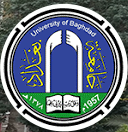Abstract
Al-Buhturi’s poetry (204-280 AH) represents a model that has its own peculiarity in ancient Arabic poetry, where critics unanimously agreed on the strength of this model and its representation of Arabic poetry that followed in the footsteps of the inherited poem in the Abbasid era in terms of contents and inherited rhetorical formation, as it corresponded to the model of Abu Tammam, who chose The craftsmanship, and the departure from the column of Arabic poetry, and the poem of Al-Siniyah is the head of Al-Buhturi’s poetry. It was read from different sides and every study was justified. This study comes to read Sina al-Buhturi from another point of view, which is "the killing of the cultural father". If the study sees that the poetic paintings that came in the poem were represented in talking about the self and its relationship with the other, as this represented the introduction of the poem and then what came from the description of the symbol of Persian civilization “Ewan Khosrau”, as it was a description based on exposure to Arab civilization and its poverty represented in “The AL, atlal of Saada," as mentioned by al-Buhturi. Perhaps the case of "killing the cultural father” falls in the same minds of many of the sons of civilizations, especially those who are aware of the image of self and altruism, and al-Buhturi is a model of these.. This is what the study reached in terms of results, represented in: Al-Buhturi's rejection of what the Arab civilization was like, and his admiration for what the Persian civilization was like through the remaining monuments left, including "Iwan Khosrau".
Article Type
Article
First Page
1
Last Page
16
Publication Date
9-15-2023
Creative Commons License

This work is licensed under a Creative Commons Attribution 4.0 International License.
Recommended Citation
Al-Aroud, Ahmed Yassin Mousa
(2023)
"Cultural Father Killing) another reading in Siniya Al-Buhturi 204 AH-284 AH),"
Alustath Journal for Human and Social Sciences: Vol. 62:
Iss.
3, Article 1.
DOI: 10.36473/ujhss.v62i3.2192
Available at:
https://alustath.researchcommons.org/journal/vol62/iss3/1










